If you’ve ever toyed with the idea of a holiday in North Macedonia, but weren’t entirely sure what there is to see and do there, you’re not alone. It’s still a bit of an unknown for most Brits, which is exactly why we had to get there ourselves. During our summer recce for our NEW North Macedonia holiday (coming soon), we found a country jam-packed with fascinating history, fabulous wines and picture-perfect mountain/lake views. Read on for our recommendations and a taste of things to come.
But before that, a quick note: we’ll refer to the country as ‘Macedonia’ from here on, as locals do, instead of North Macedonia. The latter is the official name, introduced in 2019 to settle a long-standing dispute with neighbouring Greece, but Macedonia’s what you’ll hear on the ground.
Wander and Dine in Skopje’s Old and New Towns

If you fly into Skopje (there are direct summer flights from the UK), it’s worth spending a little time to get to know this curious mix of old and new. The old quarter ‘Čaršija’ stretches from the Stone Bridge to the Bit-Pazar (you’ll know you’ve reached it by the labyrinth of cobbled pavements and Ottoman houses). It’s a great area to taste traditional Macedonian food and people watch: Galerija 7 has the best Lahmacun (a thin Turkish sort of “pizza”) in town, and the Old Bazaar is dotted with Slatkarnices (Balkan patisseries) – perfect for a post-lunch slice of baklava. Continue your adventure by perusing the souvenir shops or visiting a historic landmark such as Kale Fortress.
Across the river, a very different Skopje appears, complete with grandiose neo-classical facades and statues, ornate fountains and the unmissable main square at its centre: the result of a multi-million revamp in 2014. It shouldn’t work, but somehow does, and that contrast is exactly what makes Skopje so memorable.
Boat rides and Byzantine monasteries on Lake Ohrid

Straddling the border with Albania, the UNESCO World Heritage Lake Ohrid is a must visit. Time passes slowly on the shores of its startlingly blue waters where traditional villages perch. The beauty of Lake Ohrid is it’s developed, but not too developed, making for a great alternative to an Italian lakes holiday. Hop on a boat and admire the views from the water before jumping in for a refreshing swim—there’s up to 20 metres of sub-marine visibility in places. Not only is Ohrid one of Europe’s deepest lakes, it’s also widely considered its most ancient, at around 1.4 million years old.
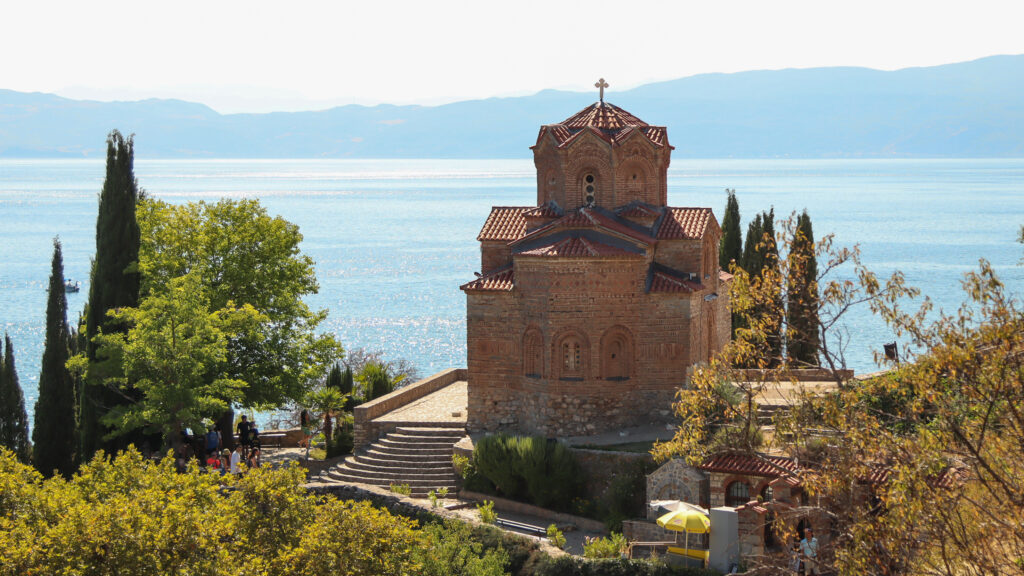
Besides its rich geological and ecological offering, the lake is also steeped in history and there are dozens of old monasteries to explore. While most tourist guides will point you towards the famous Church of St John at Kaneo (pictured), our favourite is the Macedonian Orthodox monastery of Sveti Naum, a popular beauty spot just by the border with Albania. This Byzantine structure sits on a striking cliff, set by a series of springs which flow into the lake. Be sure to pack your swimwear (as well as clothes for modesty inside the monastery) as it’s flanked by some of lake Ohrid’s best beaches as well as cafes, boat tour operators and souvenir stalls.
Related:
- In conversation with The Balkan Kitchen’s Macedonian author, Irina Janakievska
- The best family adventures in the Balkans
- Where is the Balkans anyway?
Pearl shopping in Ohrid Old Town
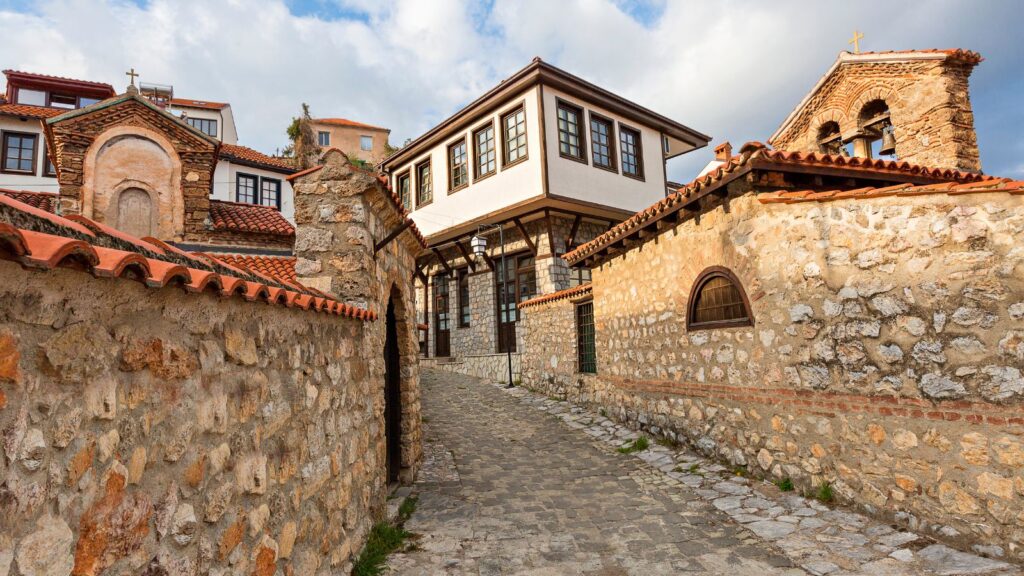
The town of Ohrid has a longstanding tradition of making pearls—yep, that’s right, making them. Queen Elizabeth II is known to have owned a pair of Ohrid pearl earrings and there are just two families there today producing them using a secret recipe.
Unlike traditional pearls, Ohrid pearls are made from shells which are ground down and moulded into shape, then coated in several layers of an emulsion which gives them their opal sheen. Included in the emulsion mixture is the scales of plasica fish—aka Ohrid trout. The other ingredients are a closely guarded secret.
Even if you’re not in the market for some new pearl earrings, Ohrid Old Town is a bewitching place to explore.
Wild nature and beaches at Lake Prespa
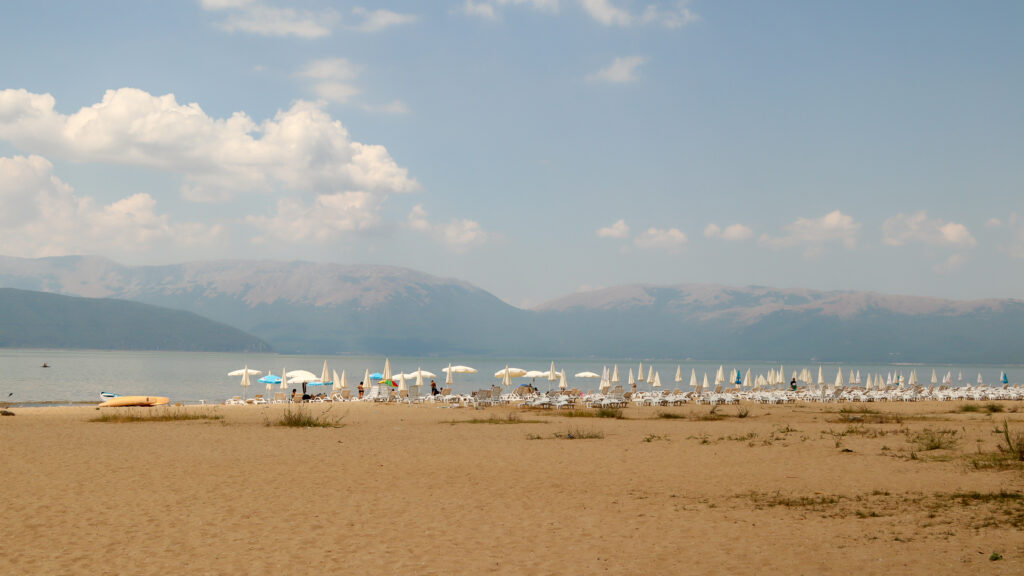
Just over the hill from Ohrid lies its quieter twin, Lake Prespa–another UNESCO World Heritage Site thanks to its remarkable geology and rich wildlife. More than 260 bird species thrive here, including the Dalmatian Pelican, and the lake’s edges are flanked by crowd-free sandy beaches (where one can get a deck chair at a very reasonable price). Out on the water, you’ll spot Golem Grad, better known as Snake Island. It’s uninhabited by humans and wonderfully atmospheric: exactly the sort of place that gives Prespa that end-of-the-earth feel.
Discover Macedonia’s Wines and Wineries

Not many know this but Macedonia produces some fantastic wines. Tikveš is the largest winemaker in the Balkans, named after the region, with a 140-year history of producing the grape stuff. This multi award-winning premium wine producer is certainly worth a visit. The Tikveš region, where its head office is, lies a couple of hours northeast of Prespa, but you can find a Tikveš wine shop near Lake Ohrid.
However, if you’re staying at Prespa Lake and want to taste some more ‘down to earth’ wines, retreat to the hills to Alesto, a boutique family-run winery with a reputation for quaffable yet affordable creations (and some stunning views). Tastings at their home cellar are accompanied by delicious home-prepared treats like ‘pindjur’ (pepper spread) and ‘tave gravca’ (beans), and a hearty helping of that warm Balkan hospitality.
Wine tastings will definitely have a place on our new North Macedonia itinerary—stay tuned.
Hiking in Galičica National Park
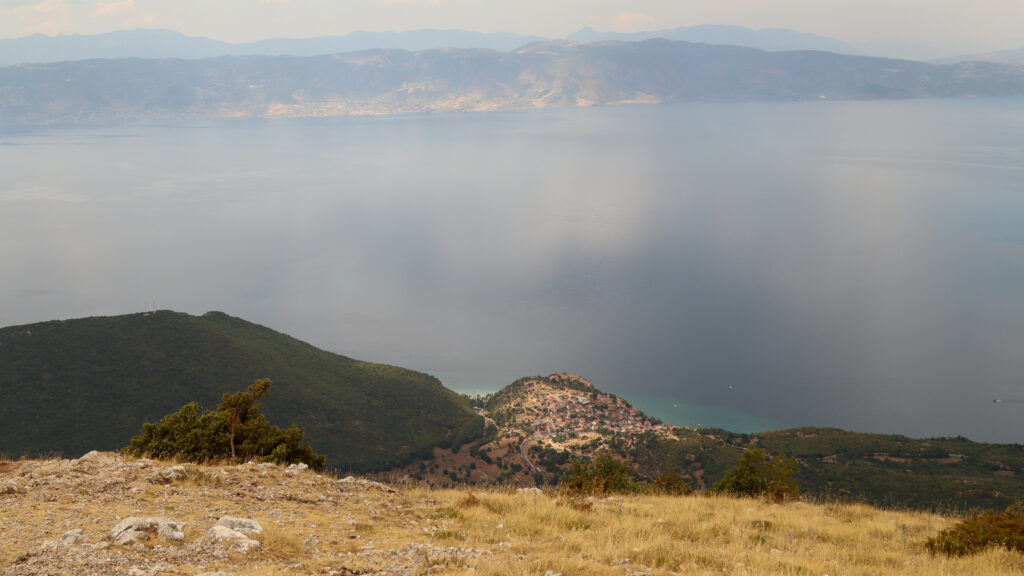
Galičica National Park rises between lakes Ohrid and Prespa, offering peaceful hill-walking and bike rides. Soak up the serenity along uncrowded trails which take you through undisturbed forests teeming with wildlife and give way to panoramic views of the lakes. There’s history too: along the ridgeline you can still spot trenches from the First World War, a visible reminder of the Macedonian Front that once cut across the mountain.
Explore Macedonia’s Ancient Ruins

No visit to North Macedonia would be complete without a nod to Alexander the Great, so we made a beeline for Heraclea Lyncestis – founded by his father Philip II of Macedon. Tucked just outside Bitola, the ruins here are one of Macedonia’s best archeological sites, yet hardly visited. Explore what remains of the baths, portico and basilica added in its Roman period, the surviving amphitheatre, and admire beautiful, remarkably preserved floor mosaics with animal motifs.
Macedonia’s larger, more famous Roman site, Stobi, sits further north, conveniently close to Kavadarci, the main town of wine region Tikveš. The ruins here are extensive, dating from 2nd-6th century AD. Take sun cream and water if visiting in summer!
Want to be one of the first to experience our NEW North Macedonia holiday? Sign up to our free monthly newsletter for updates and more news and discounts on adventure holidays in the Balkans.

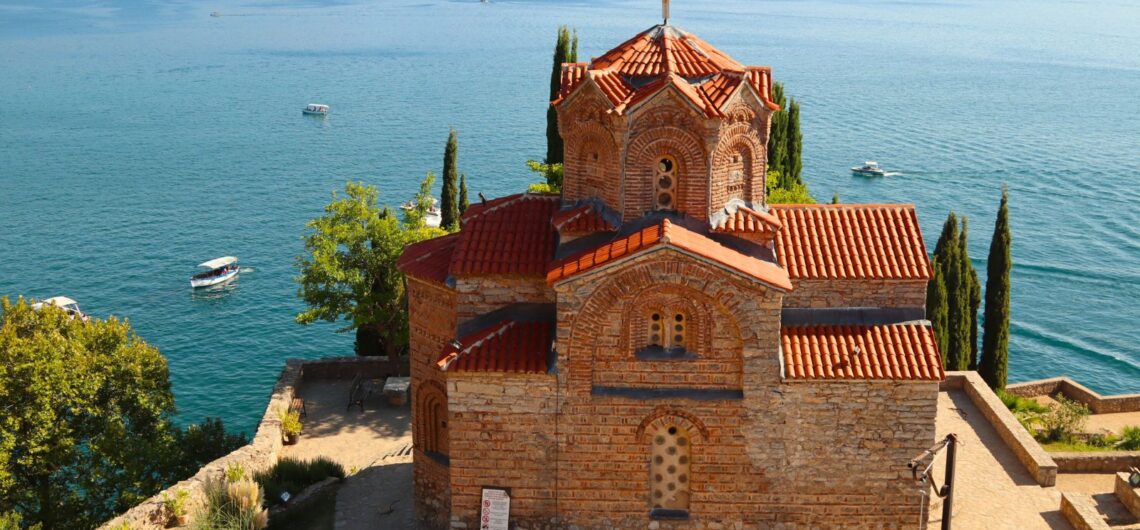
Comments